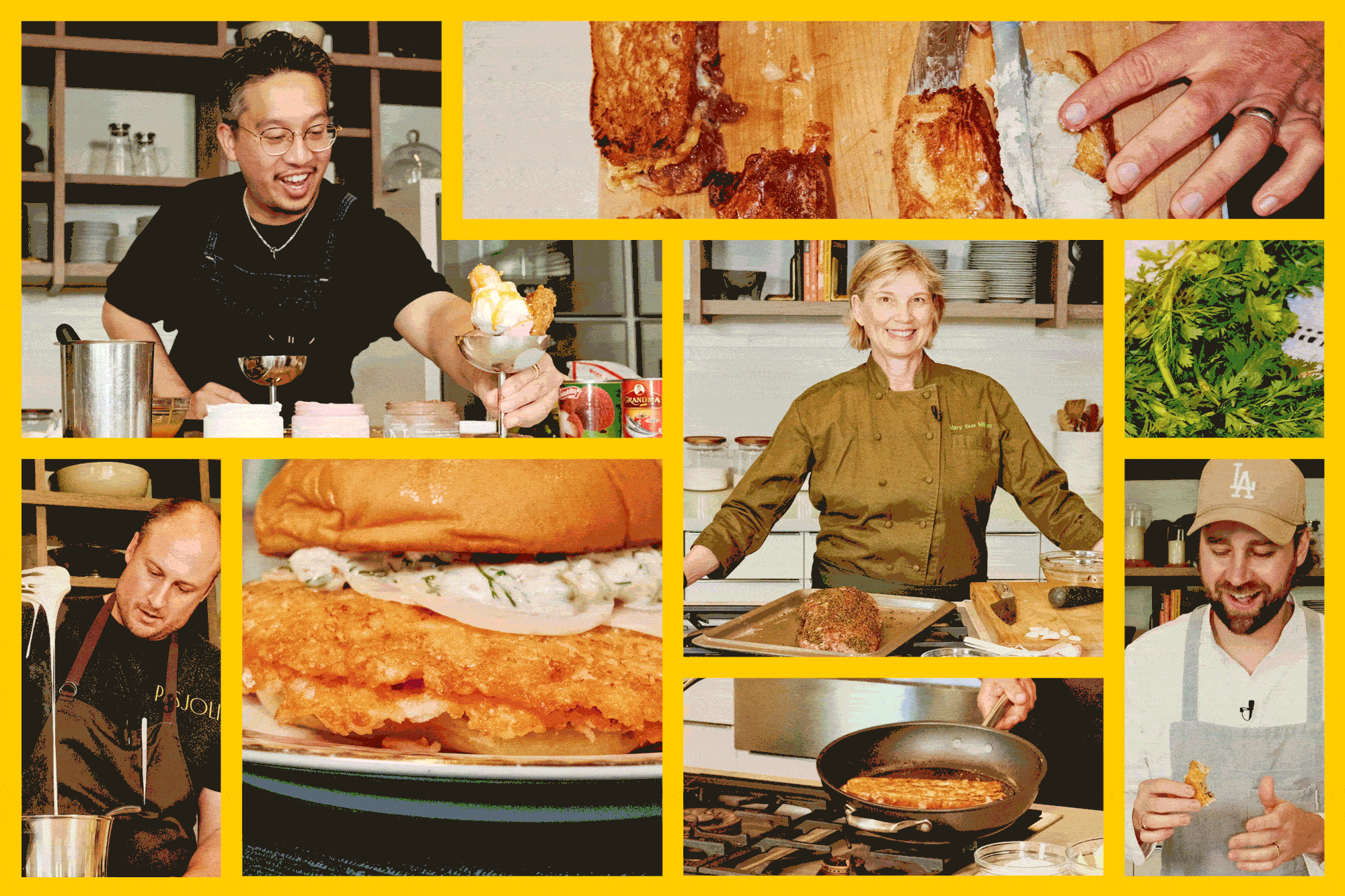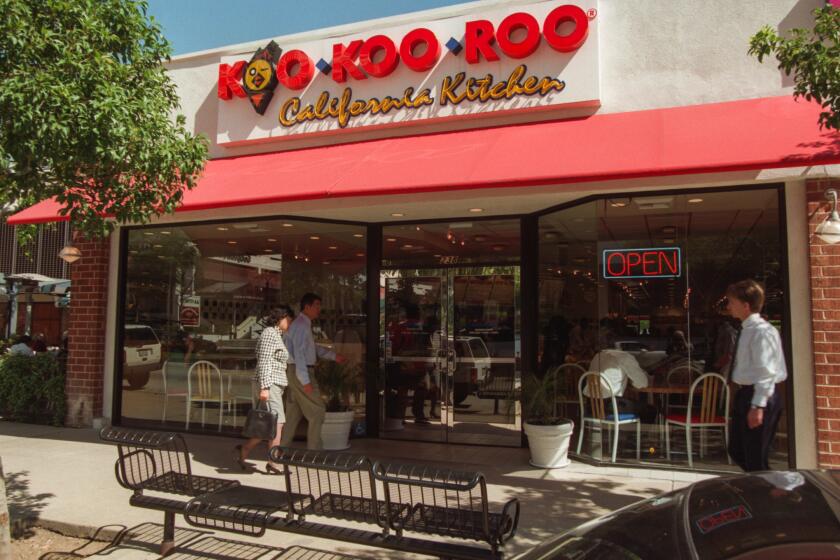Q&A: David Gelb on ‘Chef’s Table,’ Netflix series featuring 6 obsessive chefs
In pitching his six-part docu-series, “Chef’s Table,” which debuts April 26 on Netflix, creator David Gelb’s bestselling point was “Jiro Dreams of Sushi,” his 2011 documentary about Tokyo’s most esteemed sushi master, Jiro Ono.
Gelb’s promise — to have each of the half-dozen episodes focus on a successful chef with a life story as compelling, doubt-filled and quirk-riddled as Ono’s — is aptly borne out in the cast of characters assembled.
Niki Nakayama of n/naka represents Los Angeles; Attica Restaurant’s Ben Shewry is from Melbourne, Australia; and Magnus Nilsson built his reputation in the remote town of Jarpen, Sweden. Other episodes of “Chef’s Table” will focus on New York’s Dan Barber of Blue Hill Restaurant at Stone Barns and Manhattan, Italy’s Massimo Bottura of Francescana in Modena, and Argentina’s Francis Mallmann.
Recently we caught up with Gelb to talk about finding the subjects for “Chef’s Table,” why Bottura’s bullying older brothers can take partial credit for one of his most famous dishes and how “Chef’s Table” and shows such as Bravo’s “Top Chef” have less in common than you’d think.
How is “Chef’s Table” different from the dozens of other food-centric television shows?
We don’t have a host or a competition format. Each episode is its own documentary and it puts a big burden on the filmmakers to keep it compelling for 45 minutes.
How many people did you go through before ending up with the six you chose?
So many. We have a binder full of chefs. There are so many awesome chefs in the world right now and they all have incredible stories so it was really a matter of who’s available and willing to give us the time that we need to go in depth.
What sorts of things did you keep in mind while narrowing the field?
We wanted the chefs to be pretty much obsessed with what they’re doing. We didn’t want chefs who have a ton of restaurants but who are really focused on the restaurants they do have and are trying to make them perfect. We wanted chefs who mastered the fundamentals, then broke the rules of tradition and made their own cuisine. We also wanted chefs who are in different places in their careers.
How far-flung is the range of experience and scope?
Massimo Bottura is ranked the No. 3 chef in the world, has three Michelin stars and kind of reinvented the traditional cuisine of Modena, Italy. Niki Nakayama isn’t as well-known on the international scene but she’s an incredible talent, a kind of up-and-comer in Los Angeles who has a completely different take on kaiseki.
Dan Barber pioneered the whole farm-to-table movement and is very much an intellectual chef. Francis Mallmann is all about the aesthetic — his fires and his plates are incredibly beautiful. He doesn’t even really work in a restaurant because he can’t be contained — he just wants to wander through the hills of Patagonia making beautiful fires.
What part did their specific dishes play in driving the narrative?
To start out, we tried to have a tasting course or eat a bunch of the food to see what it looked like. Then we’d talk to the chefs about which dishes had the most compelling stories. Everything in this series is extremely character driven. We featured the dishes that come from a very personal place in the chef.
For example?
When Massimo Bottura was a kid his older brothers would chase him around the house because he was the runt of the litter. He’d always end up hiding under a table in the kitchen where his grandmother was making tortellini by hand. She’d defend him with her rolling pin, tell his brothers to get lost. He has this incredibly fond memory of being under the table, seeing the world from this different perspective and stealing tortellini.
So he created a dish called “Tortellini Walking On Broth.” Traditionally, tortellini is maybe 10 to a spoonful. But on this plate he had only six pieces of tortellini so that the eater can appreciate each one. It’s not just about being full or it being delicious, it’s also about the idea behind the food. He’s very much a storyteller through his food. This is really true of all of our chefs.
Your father is the general manager of New York’s Metropolitan Opera. Do you think that had something to do with the prominent role that classical music plays in your documentaries?
Totally. I’m very much influenced by my parents. Before my father was the manager of the Metropolitan Opera, he was the manager of the Boston Symphony Orchestra and he was the leader of the Sony Classical Record label. He always worked with very obsessive artists in the music world.
He’d take me on his trips. I went with him to Japan as a kid, which is one of the reasons I was obsessed with sushi. My mom is a recipe chef and a writer for cookbooks. She and Peter Kaminsky worked with Francis on his cookbook, “Seven Fires,” and his new book, “Mallmann on Fire.”
Do you cook?
Yes. I’m not great. But I try.
Making “Chef’s Table” must have been like an immersion course in fine cooking. What did you learn?
I learned so much about ingredients — like understanding what a piece of high-quality Parmigiano-Reggiano tastes like or what a true balsamic vinegar is. Massimo Bottura’s balsamic vinegar, the finest you can buy in a store, is available at Whole Foods. It’s called Villa Manodori. It turns out that my dad has been using that vinegar when he cooks since I was 13 years old. Finding that out really threw me for a loop.
What types of foods film best?
With our cameras and lenses and the way we frame it we can pretty much make anything look relatively delicious. The challenge was always, “How do I make it feel like the viewer is there?” Unfortunately there is always going to be the barrier of [the viewer not being able to taste the food]. Not even Smell-a-Vision solves that.
What’s the best response you ever got for “Jiro Dreams of Sushi”?
“I don’t eat sushi, but I still love the movie.” That shows that [the film wasn’t] really about the sushi, it was about the journey.
Let’s talk about the 5 to 1 ratio of men to women subjects in “Chef’s Table.”
I think that’s a ratio that exists in the food world as well. But there are many excellent female chefs out there and some of them we went out to and weren’t available when we needed them.
Describe a memorable meal that you had during production.
I remember being completely blown away by the tasting course that Massimo Botturo had for me in his wine cellar. He was bringing out all kinds of experimental dishes and it was absolutely amazing that all these different dishes were coming from the same [kitchen]. It was such an explosion of creativity and I was really moved by that.
One was an incredibly simple dish: He stuck a popsicle stick in a tube of foie gras rolled in hazelnuts and injected his balsamic vinegar into the heart of it. It’s so simple and yet so incredibly delicious and uses elegant ingredients served in this informal way. It was absolutely brilliant.
What’s it like poring over hours and hours of footage for a television series that is overflowing with shots of exquisite-looking food?
We always made sure that we had lunch before we reviewed cuts in the edit room. Otherwise we’d get so hungry that it was distracting.
More to Read
Eat your way across L.A.
Get our weekly Tasting Notes newsletter for reviews, news and more.
You may occasionally receive promotional content from the Los Angeles Times.










